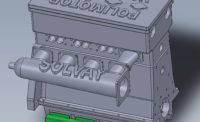For more than 100 years, UL Solutions (formerly known as Underwriters Laboratories) has subjected millions of products to rigorous tests to ensure their safety. The functional testing company has now turned its expertise to electric vehicle batteries and charging stations.
As part of its ramped up effort to test products and develop standards, UL Solutions recently opened a North America Advanced Electric Vehicle Charging Laboratory in Northbrook, IL. The facility will help EV charging equipment manufacturers and suppliers create shorter development cycles, get to market faster, and be more competitive in the global marketplace.
Located near UL Solutions’ global headquarters north of Chicago, the facility has capabilities for Level 1 and Level 2 alternating current (AC) chargers, direct current (DC) fast chargers, and grid connectivity testing for vehicle-to-grid and distributed energy resources. It also features vehicle simulation equipment and a chamber to test EV chargers under various environmental conditions.
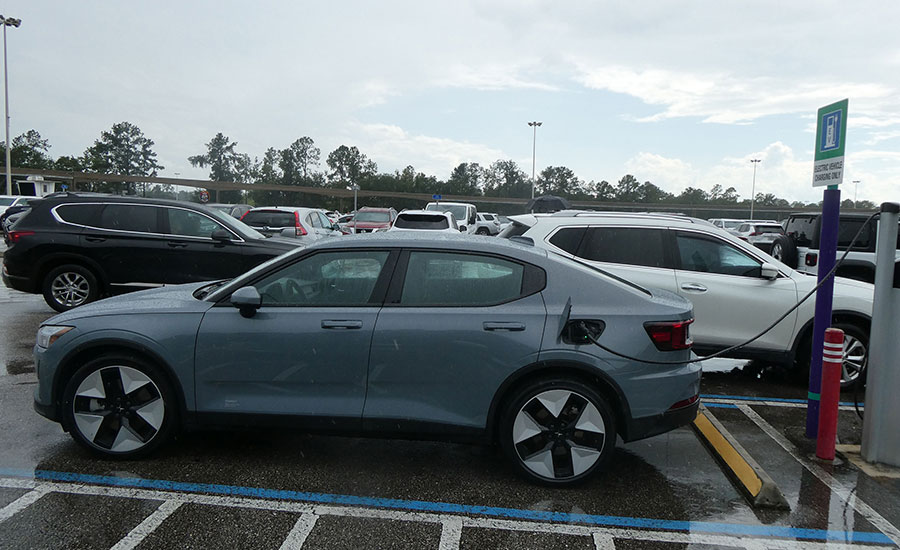
Charging stations must undergo environmental tests to ensure that they can work safely then it is raining or snowing. Photo by Austin Weber
“The automotive industry is transforming,” says Jennifer Scanlon, president and CEO of UL Solutions. “The global transition to EVs continues to fuel the need for safe, secure and sustainable new technologies for the future of mobility.
“The opening of the EV charging laboratory is an important milestone in our global footprint strategy to support the industry in critical automotive markets—from Illinois to the wider Midwest, and from the United States to related markets globally,” explains Scanlon.
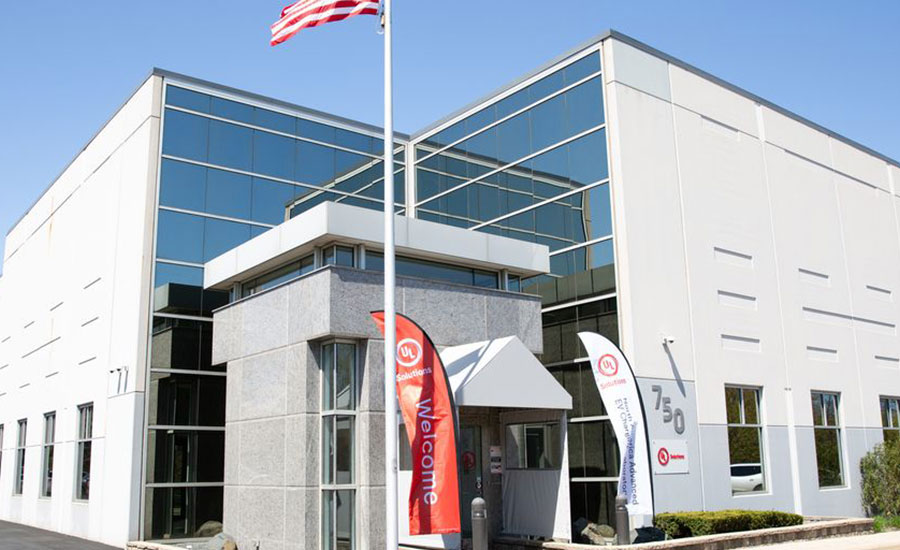
UL Solutions recently opened the North America Advanced Electric Vehicle Charging Laboratory. Photo courtesy UL Solutions
“[The] North America Advanced Electric Vehicle Charging Laboratory is [our] latest step to enhance [our] testing capabilities to support automotive, EV charging and battery manufacturers in the safe, secure and sustainable commercialization of related technologies.”
The new Northbrook facility is larger than a similar UL Solutions charging laboratory in Fremont, CA. The company also operates an EV Charging Test Center in Germany for European manufacturers and an E-Mobility and Energy Laboratory in Taiwan for Asian customers.
In addition, UL Solutions is in building a battery testing and engineering laboratory in Auburn Hills, MI, that’s scheduled to open next year. It will provide engineers with design verification and product validation services.
Various types of abuse, electrical, environmental and mechanical tests will be available, plus fire and thermal propagation evaluations, based on UL and International Electrotechnical Commission (IEC) standards, in addition to Society of Automotive Engineers and OEM specifications.
All of the EV testing laboratories will specialize in helping design engineers and product development professionals prepare their devices for production and meet regulatory or compliance requirements.
Skyrocketing Demand
The new UL Solutions facilities are coming at the right time, because demand for EV charging infrastructure is skyrocketing. Allied Market Research Inc. predicts that the global charger market will grow 29 percent annually over the next 10 years. The Edison Electric Institute estimates that 140,000 fast-charging ports alone will be needed to support the more than 26 million EVs projected to be on U.S. roads in 2030.
The Biden Administration’s final rules on its national EV charger network requires the hardware to be made in the U.S., with 55 percent of the cost coming from domestic components by 2024.
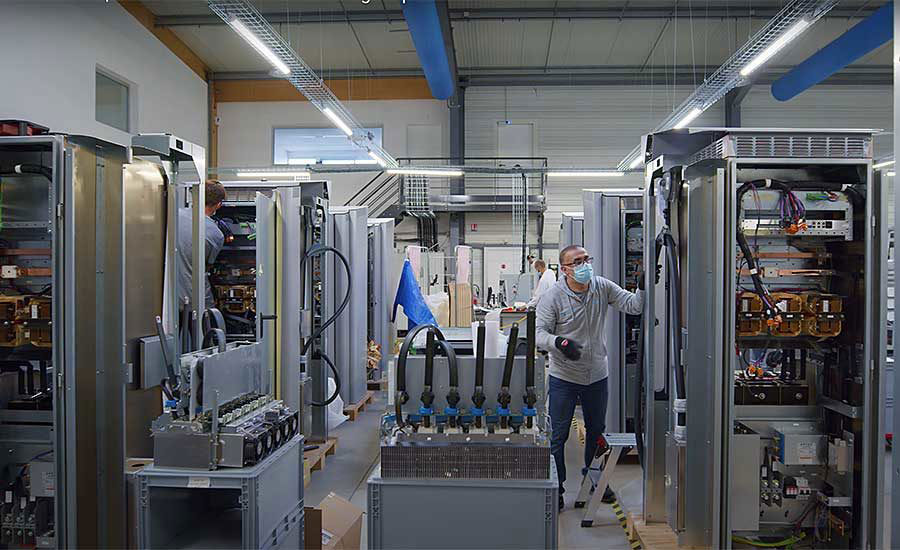
Many manufacturers are opening factories in the U.S. to assemble charging stations. Photo courtesy EVBox
That’s why European manufacturers such as EVBox and Siemens recently opened factories in the U.S. to assemble charging stations. Alpitronic, Ingeteam, SK Signet and other companies are also in the process of building or expanding production facilities.
All that activity will keep UL Solutions engineers busy testing charging equipment, vehicle-to-grid connectivity and personnel protection equipment against a variety of standards, such as ANSI/UL 2202 (the standard for DC charging equipment for EVs), ANSI/UL 2594 (the standard for EV supply equipment), ANSI/UL 2251 (the standard for plugs, receptacles and couplers for EVs) and IEC 61851-1 (electric vehicle conductive charging systems).
“We don’t tell manufacturers how they should design their products,” says Ken Boyce, senior director of principal engineering in the testing, inspection and certification group at UL Solutions. “Rather, we say ‘whatever you design has to be able to perform this way.’ We mandate the outcomes from a safety standpoint, and allow manufacturers to decide how they’ll accomplish those.
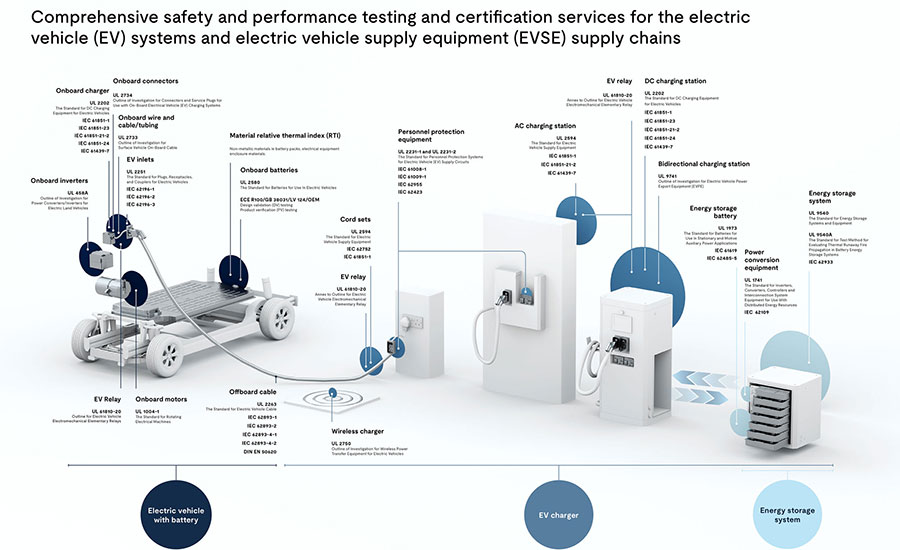
UL Solutions has ramped up its efforts to test charging products and develop standards as EVs become increasingly popular. Illustration courtesy UL Solutions
“The function of EV charging is to transfer energy in close proximity to the public,” explains Boyce. “That’s different than other types of products, such as refrigerators, which are self-contained units that don’t transfer energy.
“From the outside, many chargers look the same,” Boyce points out. “However, the inside of AC and DC charging stations are different. Many of the electronic components aren’t the same. But, all units contain circuitry and software designed to protect users from any possible electric shock hazards.”
Engineers at the state-of-the-art lab in Northbrook focus exclusively on EV charging technologies. Although the facility is new, UL Solutions has actually been testing chargers for a number of years.
“We wrote some of the first safety requirements back when GM’s EV1 model debuted in the mid-1990s,” says Boyce. “Since then, we’ve been very busy updating and refreshing them as technology has accelerated.
“There’s a lot of innovation occurring today, such as active cooling, fast charging and wireless charging,” notes Boyce. “We have a good safety record with EV charging, but things are now evolving rapidly, so we need to keep pace with technological advancements.”
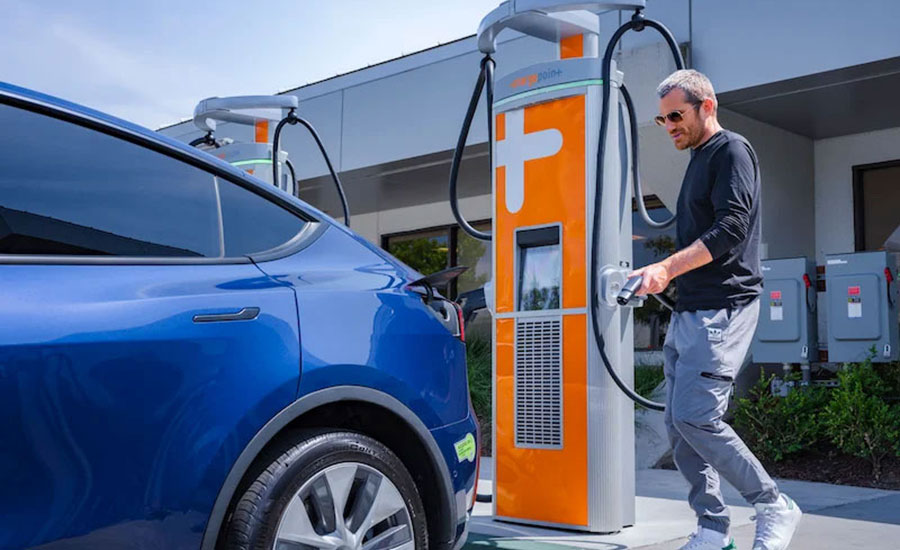
The market for EV charging stations will grow 29 percent annually over the next 10 years. Photo courtesy ChargePoint Inc.
For instance, Boyce says there’s been a lot of effort to accelerate the charging event. Higher charging voltages are one way to accomplish that, along with new types of thermodynamic systems. Megawatt charging involves 1,500 volts, but it’s focused more on heavy-duty truck applications.
“Our core focus is on safety, but we’re also looking at interoperability and performance issues related to EV charging,” says Boyce. “Many different protocols are in use, including some that are proprietary.
“Our new facility can handle all of them, including different AC-DC configurations and fast-charging options,” claims Boyce. “We help manufacturers that are trying to bring a variety of safe EV charging technologies to market. The goal is to build compliance with all of the requirements in the standards and protocols that apply to charging equipment.
“We generally conduct a suite of tests that focus on how a device operates under the most severe ‘normal’ conditions,” explains Boyce. “We look at temperatures inside to make sure that we aren’t overheating plastic parts, wiring harnesses and other critical components.
“Then, we conduct another set of tests that focus on abnormal operation and abuse,” adds Boyce. “That typically includes shorting out internal components to make sure that they don’t cause a significant fire or shock hazard. We do a whole suite a tests to prove that electrical circuitry will be reliable.
“We also do electrical stress testing and conduct dielectric strength tests to ensure that cable and wire insulation is correctly designed and implemented,” says Boyce. “Physical abuse testing includes impacting polymeric enclosures to make sure that they don’t crack under stress and provide access to dangerous high-voltage parts inside that could cause electrocution.
Boyce and his colleagues perform both destructive and nondestructive testing as part of their investigation. “We’re also very active in simulation testing,” he points out. We model different conditions to make sure that EVs and chargers respond in the right manner.”
The lab includes a chamber to do electromagnetic compatibility testing. In addition, environmental testing chambers expose EV chargers to humidity, moisture and temperature extremes. For instance, the UL Solutions engineers do a series of tests to ensure that climatic conditions, such as extreme cold or heat, don’t deform plastic housings and enclosures.
“Part of our safety evaluations include testing where we deliberately fail components to see if there’s an explosion, fire or shock hazard,” explains Boyce. “Charging cables use thick insulation to ensure safety and mitigate the potential for shock hazards.
“We assess the ability of cables, charge ports and connectors to be used safely in real-world situations,” says Boyce. “As part of that, we even perform drive-over tests to check their ability to withstand physical abuses.”




